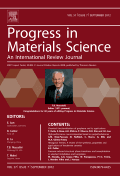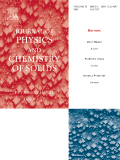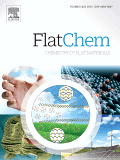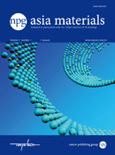
Nano Express
Scope & Guideline
Driving research excellence in nanotechnology and materials.
Introduction
Aims and Scopes
- Nanomaterials Synthesis and Characterization:
Research on innovative methods for synthesizing nanomaterials, including green synthesis and advanced fabrication techniques. This area emphasizes the importance of characterizing the structural, optical, and electrical properties of these materials. - Nanotechnology in Electronics and Photonics:
Studies focusing on the application of nanomaterials in electronic devices, including sensors, photodetectors, and transistors. This scope includes the development of novel nanostructures to enhance device performance. - Biomedicine and Drug Delivery Systems:
Exploration of nanomaterials for biomedical applications, particularly in drug delivery, imaging, and therapeutic uses. This includes the study of biocompatibility and the efficacy of nanocarriers. - Environmental Applications of Nanotechnology:
Research on the use of nanomaterials for environmental remediation, including pollutant degradation and sensing applications, as well as their implications for sustainability. - Energy Storage and Conversion:
Investigations into the role of nanomaterials in energy systems, such as batteries, supercapacitors, and photocatalytic materials for solar energy conversion. - Theoretical and Computational Studies:
Development of theoretical models and computational techniques to understand the behavior of nanomaterials, including simulations of electronic properties and material interactions.
Trending and Emerging
- Green and Sustainable Nanotechnology:
There is a growing emphasis on eco-friendly synthesis methods and the application of nanomaterials in sustainability efforts, such as environmental remediation and renewable energy technologies. - Machine Learning and Artificial Intelligence in Nanotechnology:
The integration of machine learning algorithms to predict material properties and optimize nanomaterial synthesis processes is gaining traction, reflecting a broader trend in leveraging AI for material science. - Nanomedicine and Targeted Therapies:
The development of nanomaterials for targeted drug delivery and diagnostic applications is increasingly prominent, showcasing the potential of nanotechnology in revolutionizing healthcare. - Flexible and Wearable Nanodevices:
Research focusing on the design and application of flexible and wearable nanotechnology-based devices is on the rise, driven by demands in health monitoring and consumer electronics. - Hybrid Nanomaterials and Composites:
The trend towards creating hybrid nanomaterials that combine different nanostructures or integrate nanomaterials with other materials is emerging, highlighting the drive for multifunctional applications.
Declining or Waning
- Traditional Nanomaterials for Specific Applications:
Research specifically focused on conventional nanomaterials without novel modifications or applications has seen a decline. This may be due to the increasing demand for innovative approaches that combine multiple functionalities or utilize advanced materials. - Basic Research on Bulk Properties of Nanomaterials:
Studies that primarily investigate the bulk properties of nanomaterials, rather than their unique nanoscale phenomena or applications, have become less prevalent, as the field shifts towards application-driven research. - Overly Specialized Nanotechnology Applications:
Papers focusing on niche applications of nanotechnology that do not have broader implications or interdisciplinary relevance are becoming less common, as the journal encourages more comprehensive studies with wider impacts.
Similar Journals

PROGRESS IN MATERIALS SCIENCE
Unveiling Breakthroughs in Material ResearchPROGRESS IN MATERIALS SCIENCE is an esteemed peer-reviewed journal published by Pergamon-Elsevier Science Ltd, focusing on pioneering advancements and comprehensive studies in the field of Materials Science. With an ISSN of 0079-6425 and an E-ISSN of 1873-2208, this journal boasts a prestigious status, ranking in the Q1 category for Materials Science (miscellaneous) and achieving a remarkable 99th percentile in Scopus rankings, positioned 4th out of 463 journals in General Materials Science. Published from the United Kingdom, PROGRESS IN MATERIALS SCIENCE provides critical insights into the latest discoveries, trends, and methodologies shaping the materials science landscape, making it an invaluable resource for researchers, professionals, and students alike. Readers can explore rich content on subjects ranging from nanomaterials to biomaterials and beyond, all designed to foster innovation and knowledge dissemination in the materials science community. Although it is not an open-access journal, it remains a pivotal platform for high-quality research and essential discourse in this dynamic field.

BULLETIN OF MATERIALS SCIENCE
Elevating Knowledge in Mechanics and MaterialsBulletin of Materials Science, published by the Indian Academy of Sciences, is a distinguished journal that has been contributing to the field of materials science since its inception in 1979. With an ISSN of 0250-4707 and E-ISSN 0973-7669, it provides a platform for researchers to share groundbreaking studies and advancements in the mechanics of materials and general materials science. As of 2023, the journal holds a respectable Q3 ranking in both the Materials Science (miscellaneous) and Mechanics of Materials categories, highlighting its competitive position in the academic landscape. Although the journal currently does not operate under an open access model, it remains a vital resource for professionals and students keen on exploring innovative material developments and methodologies. With a commitment to promoting high-quality research, the Bulletin of Materials Science features rigorous peer-review processes, making it an essential reference for anyone engaged in the materials science domain.

JOURNAL OF PHYSICS AND CHEMISTRY OF SOLIDS
Pioneering Insights in Materials ScienceJOURNAL OF PHYSICS AND CHEMISTRY OF SOLIDS, published by Pergamon-Elsevier Science Ltd, is a distinguished international journal that has been at the forefront of disseminating cutting-edge research in the fields of physics, chemistry, and materials science since its inception in 1956. This journal, which is recognized for its high impact in the Q2 category across multiple subjects—including Chemistry (miscellaneous), Condensed Matter Physics, and Materials Science—serves as a vital platform for researchers, professionals, and students to engage with significant advances in solid-state physics and chemistry. With Scopus rankings placing it in the top 15% of its field across various domains, the journal plays a crucial role in shaping the scientific dialogue surrounding materials properties, synthesis, and applications. Although it does not currently offer open access options, the presented research is widely recognized for its quality and relevance, ensuring that published works contribute meaningfully to ongoing scholarly discussions.

Frontiers of Materials Science
Exploring the Future of Materials for a Sustainable TomorrowFrontiers of Materials Science is a groundbreaking journal dedicated to exploring advanced materials and their applications within the ever-evolving landscape of materials science. Published by HIGHER EDUCATION PRESS, this journal offers a crucial platform for scholars and practitioners seeking to disseminate innovative research findings that foster interdisciplinary collaboration. Since its inception in 2011, the journal has enjoyed a notable Q2 ranking in the category of Materials Science (miscellaneous) as of 2023, positioning it among the noteworthy publications in the field with a Scopus rank of #222 out of 463. While predominantly published in China, the journal is committed to open access principles, allowing global accessibility to cutting-edge research. With its comprehensive coverage spanning materials synthesis, characterization, properties, and applications, Frontiers of Materials Science not only serves as a repository for academia but also bridges the gap between research and industry, making it an indispensable resource for researchers, professionals, and students alike.

ACS Materials Letters
Pioneering Discoveries in Chemical Engineering and BeyondACS Materials Letters is an esteemed peer-reviewed journal published by the American Chemical Society, emphasizing groundbreaking research and advancements in the fields of materials science, biomedical engineering, and chemical engineering. With a robust update and established reputation since its inception in 2019, this journal has rapidly ascended to the top tiers, achieving Q1 rankings in key categories such as Biomedical Engineering, Chemical Engineering (miscellaneous), and Materials Science (miscellaneous) in 2023. The journal boasts impressive Scopus rankings, including #14 in General Chemical Engineering and #19 in Biomedical Engineering, placing it among the elite publications in these domains. While not fully open access, ACS Materials Letters facilitates the dissemination of high-impact research accessible to academics and industry professionals alike. With its comprehensive scope and rigorous selection process, the journal serves as a vital resource for researchers and students eager to stay abreast of the latest innovations and technologies shaping materials science and engineering.

FlatChem
Fostering Global Collaboration in Materials InnovationFlatChem, an esteemed journal published by ELSEVIER, serves as a premier platform for disseminating high-quality research in the dynamic fields of ceramic and composite materials, electronic and optical materials, materials chemistry, and surfaces, coatings, and films. Since its inception in 2017, the journal has garnered a robust reputation, evidenced by its rank in the top quartile (Q1) across multiple categories, including a commendable rank of #25/127 in Ceramics and Composites and #49/284 in Electronic, Optical and Magnetic Materials. With a focus on pioneering advancements and innovative methodologies, FlatChem not only highlights cutting-edge research but also promotes collaboration and knowledge exchange within the scientific community. The journal’s impact is underscored by its impressive rankings in Scopus, marking it as a vital resource for researchers, professionals, and students aiming to stay at the forefront of materials science. As an open-access journal, it ensures that groundbreaking findings are readily accessible, fostering a broader understanding and application of materials innovation worldwide. The journal is based in the Netherlands, with its headquarters located at RADARWEG 29, 1043 NX AMSTERDAM, NETHERLANDS. Join the vibrant community contributing to FlatChem and engage with the forefront of material advancements.

Journal of Physics-Materials
Elevating Knowledge in Physics-Materials ResearchJournal of Physics-Materials, published by IOP Publishing Ltd, serves as a leading platform for disseminating groundbreaking research in the realms of Atomic and Molecular Physics, Condensed Matter Physics, and Materials Science. This Open Access journal, established in 2018, enables wide-reaching visibility and accessibility to high-impact studies, fostering international collaboration and innovation within the scientific community. With a remarkable Q1 ranking in prestigious categories and impressive Scopus rankings—positioned at #38 in Condensed Matter Physics and #29 in Atomic and Molecular Physics—this journal plays a pivotal role in shaping contemporary research and discussions in physics and materials science. Researchers, students, and professionals alike are encouraged to contribute to and engage with the rich knowledge base this journal offers, which is dedicated to advancing the frontier of materials research and its numerous applications.

Materials Chemistry Frontiers
Pioneering Research at the Intersection of Chemistry and MaterialsMaterials Chemistry Frontiers, published by the esteemed Royal Society of Chemistry, stands as a leading journal in the realm of materials science and chemistry, with an impressive Q1 ranking in both Materials Chemistry and Materials Science categories as of 2023. This open-access journal, operating from the United Kingdom, offers a platform for researchers, professionals, and students to disseminate high-quality, impactful research. With its E-ISSN 2052-1537, the journal is dedicated to publishing cutting-edge articles, reviews, and research communications that explore innovative materials and their applications, fostering a comprehensive understanding of the complex interplay between materials and their chemical properties. With consistent rankings in the Scopus metrics, being positioned at the 25th percentile among 317 in the Materials Chemistry category, it highlights its pivotal role in advancing the field. The journal thrives on contributions that broaden the scope of knowledge from 2017 to 2024 and beyond, solidifying its status as an essential resource for contemporary research in materials science.

NPG Asia Materials
Exploring Innovative Pathways in Material ResearchNPG Asia Materials, a premier journal published by NATURE PORTFOLIO, stands at the forefront of research in the fields of condensed matter physics, materials science, and modeling and simulation. With an impressive Impact Factor gracing its Q1 rankings in 2023, this open-access journal, established in 2012, offers a vital platform for disseminating high-quality research articles, reviews, and perspectives that advance the understanding of material properties and innovative applications. Based in the United States and catering to a global audience, NPG Asia Materials features cutting-edge contributions that not only enhance academic scholarship but also provoke discussions relevant to both industry and academia. Researchers, professionals, and students are invited to explore its extensive archive of work, covering insights from 2009 to 2024, in a bid to stay abreast of the latest developments in these rapidly evolving scientific domains.

Journal of Nanostructures
Transforming Knowledge into Nanostructured SolutionsJournal of Nanostructures, published by UNIV KASHAN PRESS, is an esteemed open-access journal that has been actively disseminating groundbreaking research since 2011. With an ISSN of 2251-7871 and an E-ISSN of 2251-788X, this journal has established itself as a significant platform for the exploration of nanostructured materials across various disciplines, including biomaterials, electronic, optical, and magnetic materials. As a testament to its scholarly impact, the journal has achieved notable rankings in its respective categories, including Q3 status in prominent areas such as Mechanics of Materials and Polymers and Plastics. This makes the Journal of Nanostructures a vital resource for researchers and professionals seeking to advance their understanding and innovation in nanotechnology. Furthermore, the journal's commitment to open accessibility ensures that valuable knowledge reaches a diverse audience, facilitating collaboration and growth in this dynamic field. For researchers eager to contribute, the journal offers a platform to publish impactful findings that can influence both academia and industry.